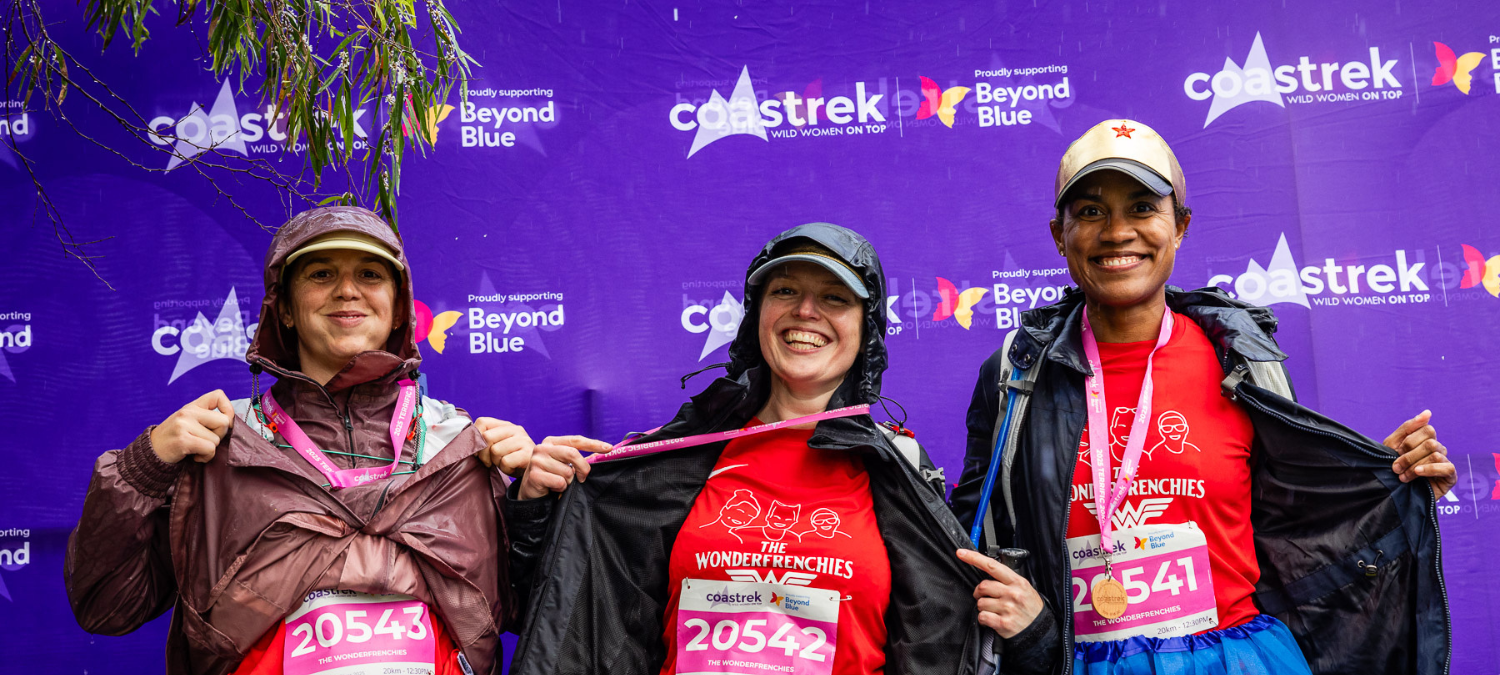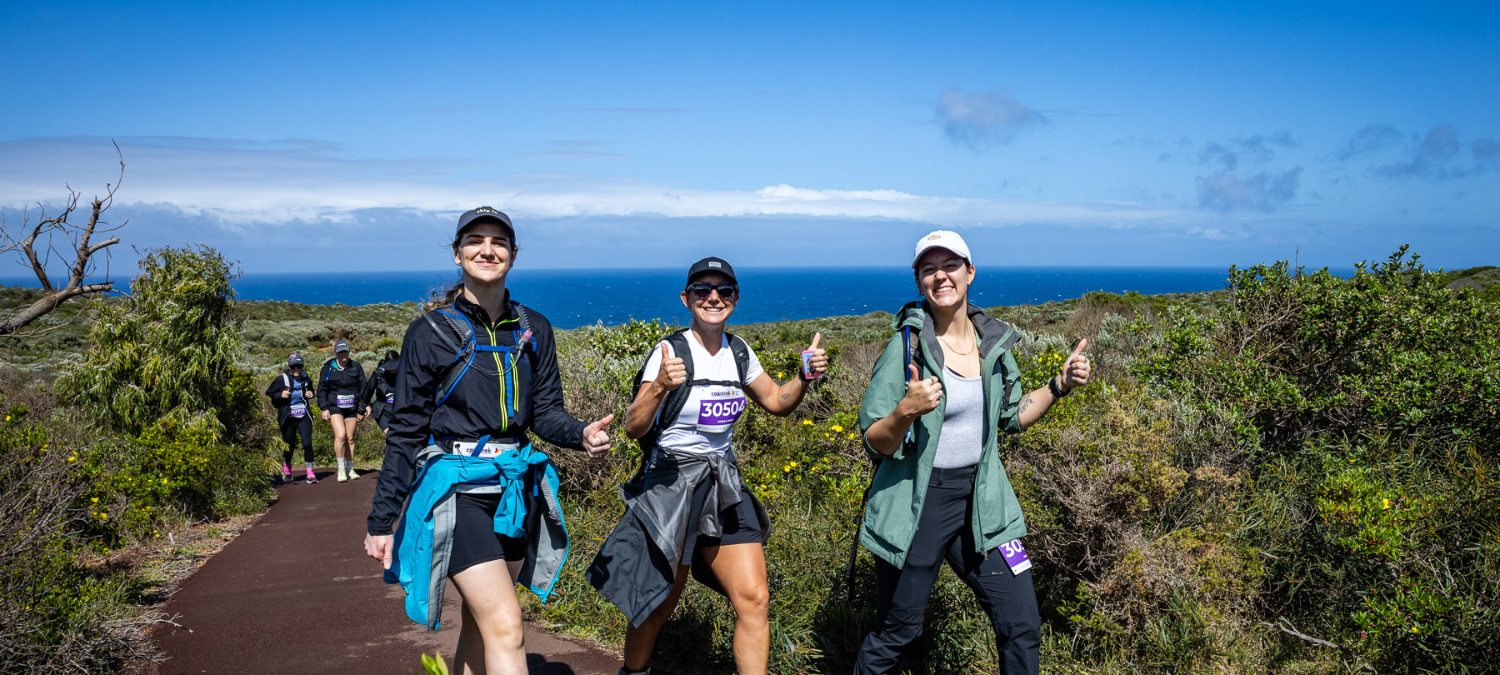By Di Westaway | Chief Adventure Chick and Founder of Wild Women On Top and Coastrek
When you start hiking, the only thing you really, really need is shoes. You can get away with wearing an old t-shirt and shorts, forgo the backpack, poles and headtorch, but you need footwear, and your dirty, old runners probably aren’t going to cut it.
So, where do you start? There’s so many options, and it really depends on your feet, your activity and your goals. There’s lots to choose from so you need to really do your own homework to ensure your shoes last and do their job: to allow you to adventure while keeping your feet comfortable and pain free.

I recommend starting at your local retail store (if you’re in Australia, go for Paddy Pallin) where you can try, touch, feel and be fitted for the best possible shoe. You can also learn all sorts of tips from the sales staff.
But it’s helpful to have a bit of an idea what you’re after. Here’s a basic guide to help you get started.
Key Considerations for Selecting Hiking Footwear
Your Goals
Choose the best shoes for your goals, and for the most difficult terrain you’ll encounter. For hiking on easy terrain, a lightweight shoe with minimal support is fine but for moderate hikes you might need a waterproof, durable shoe. For Coastrek, consider shock absorbing, breathable or waterproof shoes and for endurance hiking, opt for support, cushioning and durability.
Terrain
Research the terrain of your hike before choosing shoes. You might need different shoes for the soft muddy trails of the Overland Track in Tassie compared with the red desert sands of the Larapinta Trail or the Main Range peaks. For hard flat trails, you need shock absorbing qualities but for scrambling around steep sandstone rocks you need good grip soles.
Water Resistance
Water resistance comes from waterproof inner membranes or chemically treated uppers. Gore-Tex is designed to keep moisture from getting into your shoe while allowing your sweat to get out. Liners attempt to add "breathability" to your shoe and they'll keep your feet warmer. It’s safer to choose waterproof shoes, except in extreme heat.

Fit
You’ll get the best fitting by going to a reliable outdoor retailer such as Paddy Pallin but allow plenty of time to get this right. Once you’ve worked out your size in a particular brand, you might be able to purchase online.
Tips to get the right fit
- You should usually buy shoes half a size larger than your casual shoe size.
- Active feet expand, so have your fitting in the afternoon when your feet are at their biggest.
- Wear the socks you intend to hike with and bring any orthotics or inserts along.
- If you’re not 100% sure, ask your retailer if you can take them home and wear them inside just to be sure.
Weight
The lighter the better for footwear because it can allow you to move faster and freer on your adventures.
Toe Protection
Most hiking shoes have some degree of toe protection, which is ideal in rocky terrain and to keep the shoe from breaking down as fast. But it also adds weight and lowers the sensitivity and agility of the shoe.
Types of hiking boots
Hiking Shoes
Hiking shoes are a mixture of lighter trail running shoes and burlier hiking boots. They have a grippier tread and are usually heavier, sturdier and more durable than trail runners. They don’t require much breaking in and usually come in both waterproof and non-waterproof options. Best For: Day hikes, moderate to challenging backpacking and long-distance lightweight hiking.
Hiking Boots
Today’s hiking boots are tough, durable and high cut with hard-wearing rubber soles that work best when you’re carrying a heavy backpack. They are lighter than in the past - between 1 and 1.5kg per pair - and provide much more support and ankle stability than a shoe. Keep in mind full-leather boots usually require several long hikes and a fresh water soaking to wear them in, while mesh/gortex/leather hybrids are much faster to wear in.
Best Uses: Hiking on rough rocky terrain, backpacking with loads heavier than 15 – 20kg, or extreme cold and/or snow.
Trail Runners
Trail runners are designed for running on a variety of terrains, but can also be great for hiking on rock and dirt trails and uneven surfaces such as granite or sand. They have good tread for hiking, more sensitivity underfoot and are comfortable straight out of the box. They do have less toe protection than a hiking boot or shoe.
Best For: Light-weight hiking and backpacking and trail running on easy to moderate terrain.

Approach Shoes
Approach shoes are a combo of hiking boots and rock climbing shoes, designed for ‘approaching’ rock climbing destinations. But even if you’re not a climber, these might be just the thing you’re looking for if you want to do a combination of hiking and rock scrambling. They are like hiking shoes, but have a sticky rubber sole and rubber toe band. They’re designed for scrambling on rocky off-trail surfaces and scaling rocky peaks. Check out some of the Hoka Arkali on the Hoka website.
Best Uses: Rock scrambling, climbing approaches, easy to moderate climbing
Conclusion
While you might not even notice how happy your feet are in the right shoes, you will certainly know if you’ve got it wrong when you’re out in the wilderness for few days. Take the time to find your deliciously comfortable shoes and don't let your footwear ruin your next adventure.






